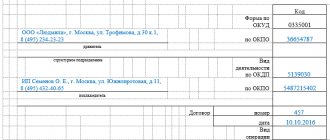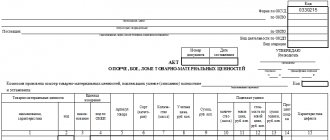Magazine "Warehouse and Equipment", No. 3–4, 2008 // April, 2008
The process of goods arriving at the distribution company's warehouse begins with procurement. It is the efficiency of interaction between the warehouse and purchasing services and the timely exchange of information that determines how prepared the warehouse will be for receiving goods and how quickly it can perform this function.
As a rule, the frequency and volume of deliveries is a stumbling block between the purchasing department and the warehouse. The purchasing department strives to make rare purchases in large quantities. At the same time, in order to maintain good relations with suppliers and to obtain additional discounts, purchases can be carried out according to a schedule convenient for suppliers. The warehouse is interested in uniform loading of its capacities and, therefore, a rhythmic flow of products. The root cause of the conflict is the lack of an inventory management system, as well as a unit that carries out unified management of them within the enterprise.
Optimizing an inventory management system is a long and complex process. However, there are a number of methods that will significantly facilitate the work of accepting goods into the warehouse in a fairly short time.
Supply optimization is the key to solving the problem
The very first element in this chain is optimization in product supply. This is especially important when it is necessary to organize high-quality storage in our warehouse.
If this process remains unsystematic, the workload of warehouse workers will be unevenly distributed. In addition, the quality of work is unsatisfactory:
- downtime cannot be ruled out
- It’s not uncommon to work in “emergency” mode,
- accumulation and queues of freight transport,
- acceptance of goods with gross errors.
Agree, all this leads to the fact that the quality of product reception drops significantly.
How to draw up an acceptance certificate of goods and materials
The acceptance certificate of goods and materials is usually attached to the supply contract and is considered an integral part of the agreement. The standard document structure includes the following information:
- Title of the document.
- Date and place of completion.
- Information about the parties to the contract displaying details, addresses and contacts.
- Full names of responsible employees, details of their passports, powers of the represented parties.
- The contract number and the date of its signing, according to which the delivery is ensured.
- List of transferred goods and materials with display of quantity and price.
- Qualitative parameters of goods and materials.
- Final estimated amount.
- Presence/absence of product defects.
- List of identified discrepancies.
- Claims based on acceptance results.
By agreement of the parties, other requirements may be displayed in the form, for example:
- Terms of payment for shipped groups of goods (advance payment - full or partial, payment after acceptance of goods and materials).
- Deadlines for final payment, display of the number and date of payment orders for advance payments.
- Inclusion of certain groups of inventory items or named items in special acts.
What does the law say?
At the moment, there is not a single regulatory act in Russian legislation that would relate to issues of acceptance of goods. The policy of conduct on this issue is based entirely on the instruction “On the procedure for accepting products for industrial and technical purposes and consumer goods by quantity,” which was approved by the resolution of the USSR State Arbitration Court of June 15, 1965. N P-6, as amended on December 29, 1973, and on November 14, 1974.
This instruction states that if both parties did not refer to the points of the above instructions upon acceptance, then all problems associated with the acceptance of goods and the organization of goods storage services may either not be resolved at all, or are resolved only in the form of an oral agreement between the two parties.
In order to minimize controversial situations and improve the quality of receiving goods in general, this process should be divided into several different sequential elements.
Step-by-step description of the process of accepting cargo and goods
Step 1.
In order for storage in the warehouse to be carried out properly, at the first stage it is necessary to carefully check the documentation that necessarily accompanies all cargo.
In most cases, such documentation is provided:
- waybills,
- invoices,
- waybills for containers (including boxes, pallets, pallets, etc.),
- waybills,
- product quality certificates and other documents.
The employee responsible for receiving goods must check the invoices:
- data of shippers and consignees,
- quantity of goods,
- assortment and packaging of goods, etc.
If the document is missing, acceptance should not be stopped. However, in this case, a special act should be drawn up, which will indicate which goods were accepted and which documents for them were not provided. This act is drawn up in two copies (for both the consignor and the consignee). Both parties put their signatures on the act.
At the next stage, it is necessary to verify the integrity of the seals on transport, as well as on containers. Seal impressions must fully correspond to the existing samples. If a special act is drawn up, it is advisable to attach a video or photograph to it.
Step 2.
After completing the formalities, the immediate unloading of vehicles begins. This process can be combined with full or preliminary acceptance of goods.
To make the most efficient use of vehicle space, many suppliers choose not to use the pallet shipping method. Instead, goods are stacked on pallets. Often goods are sent in the so-called “bulk” - that is, placed on warehouse pallets.
If information about stowage standards is entered in the product card, then the unloading stage will be accompanied by high-quality acceptance of the goods. If the goods were delivered on pallets, their exact quantity is indicated on the invoice.
Before acceptance, the person in charge must carefully count all available pallets. If their quantity does not coincide with what is indicated in the invoice, then discrepancies will be noticed in the total quantity of goods received. If this fact is discovered, a pretentious act of under-delivery or excess of cargo (goods) must be immediately drawn up with the signature of the forwarder.
Step 3.
The actual process of unloading pallets, for which fork carts are used. They are designed in such a way that even one loader can independently transport an entire pallet for subsequent storage in a warehouse filled with heavy goods.
During the unloading process, personnel conduct a visual assessment of the integrity of all packaging materials and goods. It is necessary to carefully ensure that the packaging is not damaged or deformed, and that the packaging stretch film does not have cuts or cuts.
At the same time, it is important that the commercial waste does not exceed the established standards. In the event that the packaging of the goods is dented, and fragile containers are also found to be broken, this is a sign that loading or transportation was not carried out properly. All noticed defects and violations must be described in a claim report (for damage or deformation of goods).
In the event that a pretentious act is drawn up, the party that does not agree with the described content has the right to additionally describe there its opinion and vision of the current situation.
Final acceptance of goods occurs during the opening of cargo packages, as well as during a detailed check of the quality and quantity of goods. Depending on what subtleties exist in the agreement between the contractor and the client, the goods can be accepted both with the forwarder and after his departure, but only if all the necessary accompanying documentation is completed.
Who is appointed
Financial responsibility is assigned to the employee under certain conditions. In fact, literally every employee of an enterprise faces this type of liability, since he, one way or another, uses the employer’s property. But there is some difference and financially responsible persons are considered to be employees who are responsible for maintaining material assets in a suitable condition. It is these employees that will be discussed.
What points must be observed:
- An additional liability agreement is concluded with such an employee to the main employment contract.
- The job responsibilities must clearly state the employee’s functions to ensure the safety of property. Transportation of material assets, rules for their write-off, as well as storage and processing are listed in this document.
Based on regulations, a list of positions has been determined that are responsible for values:
- Employees working on cash registers or their replacements.
- Employees carrying out activities with banking information.
- Recruited employees for the production (destruction) of banknotes and coins.
- Workers engaged in cash turnover.
- Workers handling money.
- Commodity experts or sellers.
- Managers of production or workshops.
- Warehouse managers, pawnshop workers, technologists and everyone involved in direct production.
- Other positions.
Along with the employment contract, these employees are required to enter into an additional agreement on responsibility for the employer’s property.
How is piece goods accepted?
Depending on whether your supplier is reliable or not, the product can be selected by full or partial sampling. The results obtained in this case apply to the entire shipment of cargo. How to determine the reliability of the supplier in this case? Based on how many goods will be found that are mis-graded, damaged, defective, or under-delivered.
There are two ways:
- Weighing by net weight. In this case, it is necessary to have a clear idea of the weight of both the unit itself and its packaging.
- Recounting the units of goods contained in each individual container.
To reduce acceptance time and at the same time improve its quality, “serious” warehouse enterprises use devices for reading barcodes. This equipment can be both stationary and portable in the form of hand-held scanners, systems with a remote scanner, etc. Portable models for reading barcodes are installed directly on warehouse vehicles, and can also be used by warehouse employees when performing various operations.
At the moment, the most popular models for reading barcodes are the so-called radio terminals. They have direct access to the warehouse company's database.
Return back to list
How to choose software for inventory automation
Basic criteria include:
- Of course, as such the functionality of .
The main features that a consumer expects from a modern warehouse automation program:
- adaptability to automatically filling out unified forms and other accounting forms (optionally, based on previously generated documents, accounting data, automated means of monitoring the movement of goods - barcodes, RFID tags);
- adaptability to quickly unloading warehouse documents in common file formats - for example, Excel;
- compatibility with external accounting modules (for example, 1C line programs);
- the ability to quickly send documents to recipients (both within the company and outside it);
- the presence of means of control over the various statuses of the product (“received”, “sent”), its quantitative characteristics (“many”, “little”, “out of stock”), consumer properties (“expiration date”);
- the ability to quickly search for the necessary data on the supplier;
- the ability to quickly search for the necessary data by product item, “grade”, “batch”;
- adaptability to remote control via the Internet;
- adaptability to the calculation of algorithms on the basis of which warehouse operations will be carried out;
- adaptability to planning purchases (vacation), minimizing overstocking;
- collection of statistics on warehouse operations, their analysis;
- availability of tools for automation;
- availability of an error monitoring system (when filling out documents);
- adaptability to tracking the physical movement of goods (if technical means of identification are available).
Representatives of SMEs may benefit from the solution offered by the My Warehouse service - LINK.
- Industry specification.
There are warehouse solutions that are best suited to retail. There are industrial ones. There are those that are designed specifically for logistics organizations whose warehouses are the main type of infrastructure. Theoretically, it is possible to find a universal product - but the larger the organization, the more its business processes are tied to the industry specifics of warehouse operations. And the greater in general will be the need for solutions that are best suited to a specific segment of economic activity.
- Adaptability to integrate warehouse software with other enterprise management automation tools.
It is quite obvious that warehouse automation is more effective, the deeper into the enterprise infrastructure various accompanying software and hardware tools for automating operations accounting are implemented - scanners, TSD, tags. The extent to which the warehouse program is adapted to integrate with such tools also plays a role.
Specialized multifunctional software products designed to solve basic problems specific to warehouse management form a separate category of solutions - WMS (Warehouse Management System, that is, software products that are warehouse management systems). In them, the specified functionality, industry specifications and adaptability to integration are fully implemented.










